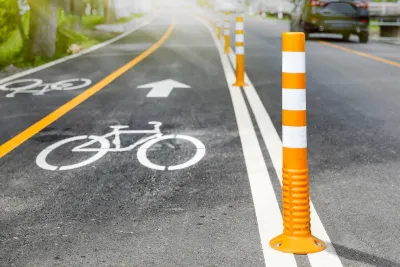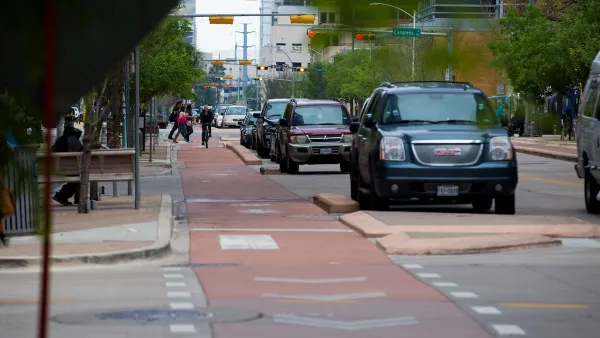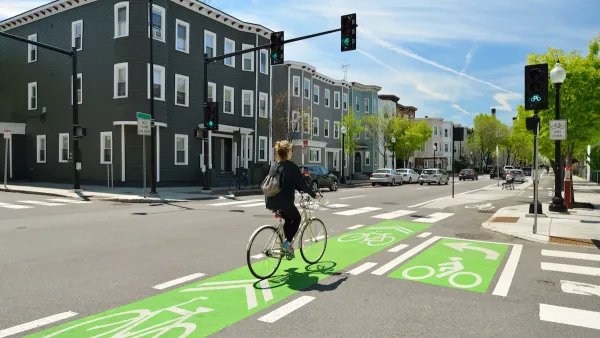Bike lanes delineated with bollards or traffic cones are most likely to slow drivers and reduce crashes between cars and bikes.

A study of temporary bike lanes installed at an intersection in Asbury Park, New Jersey shows that both painted and delineated bike lanes (those separated with bollards) slow drivers and reduce the risk of collisions with people on bikes.
As Maylin Tu explains in Next City, “For the experiment, researchers temporarily removed nine parking spaces to create 6-foot wide bike lanes with a 3-foot buffer between bike and car travel lanes. Car travel lanes were reduced by at least one foot each, a decrease that has been shown to reduce crashes. In addition, the bike lanes created a sharper turning radius for drivers turning right, another intervention that might force drivers to slow down.”
Delineated lanes made the biggest impact. “For vehicles turning right, top speeds were reduced by 28% and average speeds by 21%. Paint-only bike lanes slowed driver speeds by up to 14% and drivers going straight slowed down by up to 8%.”
The study notes that pop-up, temporary bike lanes like the ones used in the research can help cities understand how bike lanes can improve road safety before making more permanent changes, but “In order to achieve Vision Zero initiatives, planners and policy makers should focus efforts on delineated bike lanes, not merely painted lanes.”
FULL STORY: How Bike Lanes Slow Drivers and Save Lives

National Parks Layoffs Will Cause Communities to Lose Billions
Thousands of essential park workers were laid off this week, just before the busy spring break season.

Retro-silient?: America’s First “Eco-burb,” The Woodlands Turns 50
A master-planned community north of Houston offers lessons on green infrastructure and resilient design, but falls short of its founder’s lofty affordability and walkability goals.

Delivering for America Plan Will Downgrade Mail Service in at Least 49.5 Percent of Zip Codes
Republican and Democrat lawmakers criticize the plan for its disproportionate negative impact on rural communities.

Test News Post 1
This is a summary

Test News Headline 46
Test for the image on the front page.

Balancing Bombs and Butterflies: How the National Guard Protects a Rare Species
The National Guard at Fort Indiantown Gap uses GIS technology and land management strategies to balance military training with conservation efforts, ensuring the survival of the rare eastern regal fritillary butterfly.
Urban Design for Planners 1: Software Tools
This six-course series explores essential urban design concepts using open source software and equips planners with the tools they need to participate fully in the urban design process.
Planning for Universal Design
Learn the tools for implementing Universal Design in planning regulations.
EMC Planning Group, Inc.
Planetizen
Planetizen
Mpact (formerly Rail~Volution)
Great Falls Development Authority, Inc.
HUDs Office of Policy Development and Research
NYU Wagner Graduate School of Public Service





























